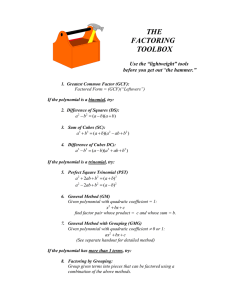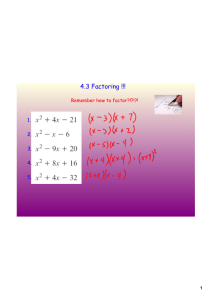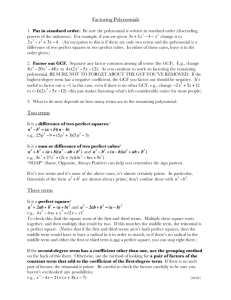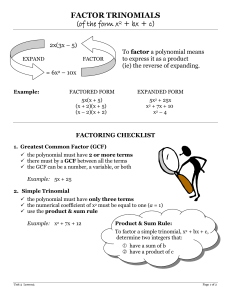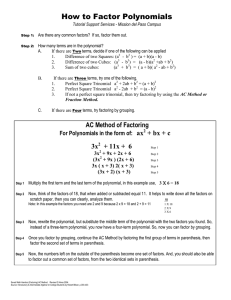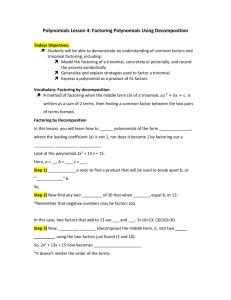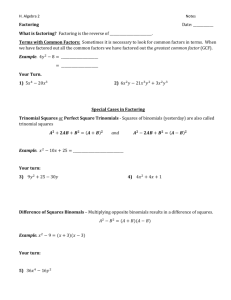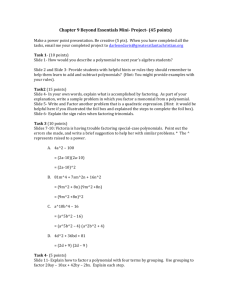Factoring Polynomials: Methods & Checklist
advertisement
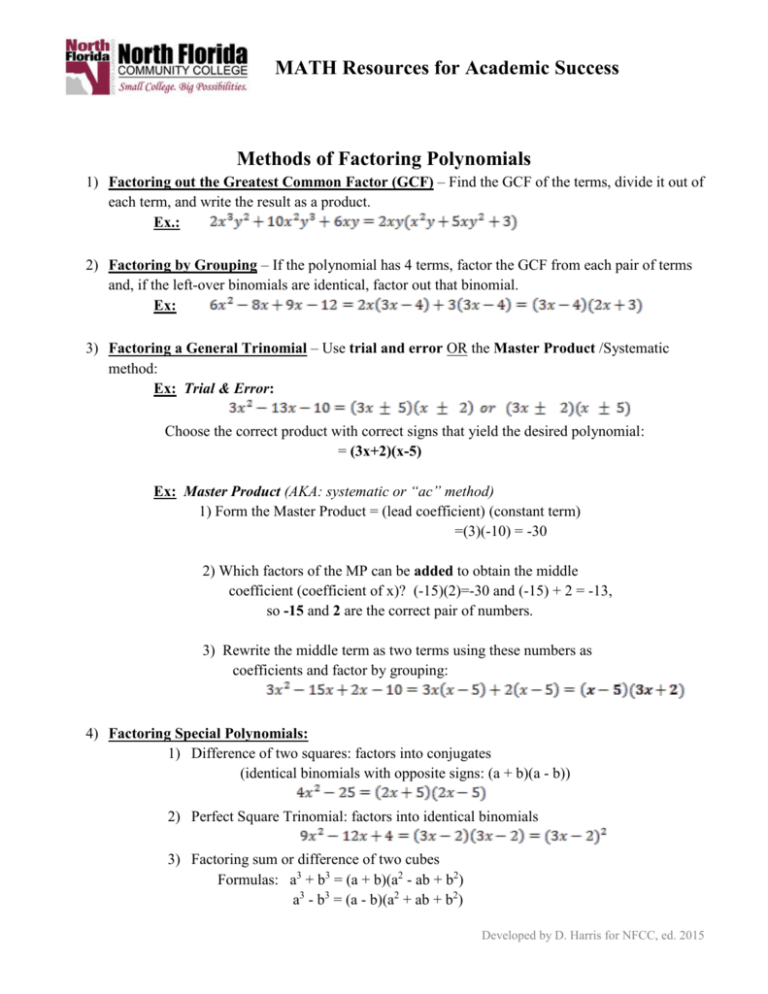
MATH Resources for Academic Success Methods of Factoring Polynomials 1) Factoring out the Greatest Common Factor (GCF) – Find the GCF of the terms, divide it out of each term, and write the result as a product. Ex.: 2) Factoring by Grouping – If the polynomial has 4 terms, factor the GCF from each pair of terms and, if the left-over binomials are identical, factor out that binomial. Ex: 3) Factoring a General Trinomial – Use trial and error OR the Master Product /Systematic method: Ex: Trial & Error: Choose the correct product with correct signs that yield the desired polynomial: = (3x+2)(x-5) Ex: Master Product (AKA: systematic or “ac” method) 1) Form the Master Product = (lead coefficient) (constant term) =(3)(-10) = -30 2) Which factors of the MP can be added to obtain the middle coefficient (coefficient of x)? (-15)(2)=-30 and (-15) + 2 = -13, so -15 and 2 are the correct pair of numbers. 3) Rewrite the middle term as two terms using these numbers as coefficients and factor by grouping: 4) Factoring Special Polynomials: 1) Difference of two squares: factors into conjugates (identical binomials with opposite signs: (a + b)(a - b)) 2) Perfect Square Trinomial: factors into identical binomials 3) Factoring sum or difference of two cubes Formulas: a3 + b3 = (a + b)(a2 - ab + b2) a3 - b3 = (a - b)(a2 + ab + b2) Developed by D. Harris for NFCC, ed. 2015 MATH Resources for Academic Success Checklist To Factor a Polynomial Completely: 1) Is there a GCF? If so, factor it out. 2) Can I factor by grouping? If there are 4 terms, try grouping. 3) Is it special? If you recognize the polynomial as a Difference of Squares or Perfect Square Trinomial, factor it accordingly. 4) Can I factor the trinomial using the Master Product or Trial & Error methods? 5) Can I go further? Can any of the results be factored further? Developed by D. Harris for NFCC, ed. 2015

